explaining lava forms
We recently returned from Hawaii where we spent a week exploring Hawai’i Volcanoes National Park. The Big Island of Hawaii is made up of 5 shield volcanoes and was born a relatively recent 300,000 years ago. Today, three of the volcanoes (Kileaua, Mauna Loa, Hualalai) are still active, one is dormant (Mauna Kea), and one is extinct (Kohala). Kileaua is one of the world’s most active volcanoes and has been erupting continuously since January 3, 1983. We visited its active vent to see the flow of red hot lava and we hiked many miles in the lava fields formed by its prior eruptions. As you might have predicted, we found the fluid-like lava rock fascinating and documented its shapes in hundreds of photographs (slideshow below and flickr set). We also started reading about how and why patterns form in lava flows.
Lava
Lava is the molten rock expelled by a volcano during an eruption. Lava flows can have very different properties based on their chemical composition, temperature, eruption rate, crystal content, and bubble content. The current lava flow in Hawaii is an effusive flow of basalt with low viscosity and high temperature. It flows quickly and smoothly, leaving glassy rippled rock in its wake. Geologists call this type of flow pahoehoe, a Hawaiian name that equates the lava forms to swirling water (“hoe” = to paddle). This is an apt name as the lava rock is festooned with incredible patterns of contorted wrinkles, ripples, and folds. What causes these forms?
Lava Flows and Folds
When lava flows, the outside layer quickly cools forming an exterior crust. In fact, many of the lava patterns we found were quite thin and hollow inside where the lava had subsequently evacuated after the structures were formed. This cooled layer is significantly more viscous than the lava below acting like a viscous sheet. Folds begin to form when the flow compresses due to the slowing of the flow front. This compression could be caused by hitting an obstruction or entering a narrow channel. These folds form in the span of seconds to minutes.
Viscous Sheets
The folding of viscous or elastoviscous materials has been widely studied recently both in physical experiments with non-Newtonian fluids and numerical simulations. Pahoehoe lava forms exhibit relatively regular fold properties; their folds form perpendicular to the direction of flow with a consistent wavelength and amplitude. This property is shown very purely in examples of viscous sheets. Check out the videos below. One shows the buckling of pancake batter being poured into a pan (not kidding) and the other is a computer animation of similar from a paper presented at SIGGRAPH 2012.
Pahoehoe Dynamics
Pahoehoe flows exhibit significantly more complex dynamics than these isolated examples, incorporating viscoplastic behavior, cooling, shallow flow, and more with the folding process. Lava flow is not strictly a viscous sheet; it is a fluid with a layer of high viscosity that smoothly transitions to a large volume of lower viscosity fluid. This means that the lava exhibits fluid behavior generating interesting swirls and movement. You can even get lava spirals when multiple flows meet. Additionally, as the lava cools and compresses, the viscous crust thickens. Thickening increases the wavelength of the folds that form creating a larger scale pattern. This change in scale can occur 2-4 times over the cooling process, leading to recursive folds with a complex braided appearance.
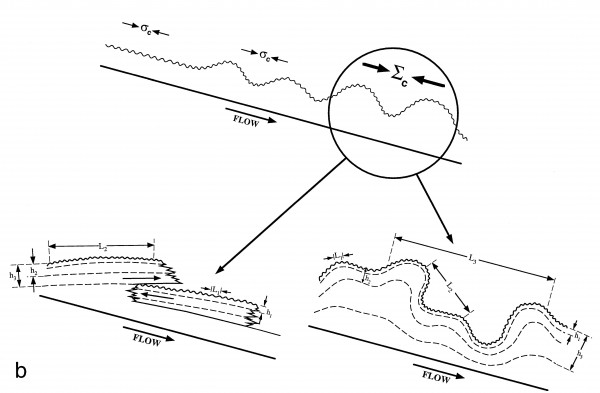
This explanation comes from the research of Jonathan Fink who has published a number of papers exploring ropy pahoehoe since 1978. The first paper, “Ropy Pahoehoe: surface folding of a viscous fluid”, describes how he measured the profiles of lava flows using this sweet apparatus.
In later papers, he uses experiments where liquid polyethylene glycol wax is forced through a hole into a tank of cold water to recreate different phenomena exhibited by lava flows. By varying the rate of cooling and the flow rate, he was able to produce features we see in basaltic lava flows including transverse folds, pillows, rifts and levees.
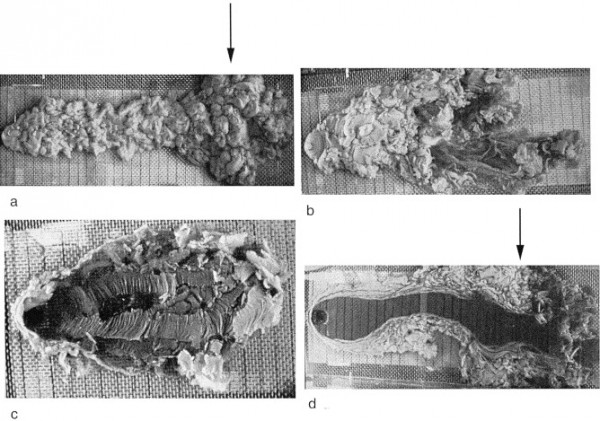
Other Interesting Stuff We Noticed About Lava
The varying degrees of oxidation and chemical composition lead to different colors.

Lava is very porous. It’s riddled with tiny vesicles where it hardened around gas bubbles.

You can poke a walking stick into the active lava flow and create your own glassy hunk of fresh rock.
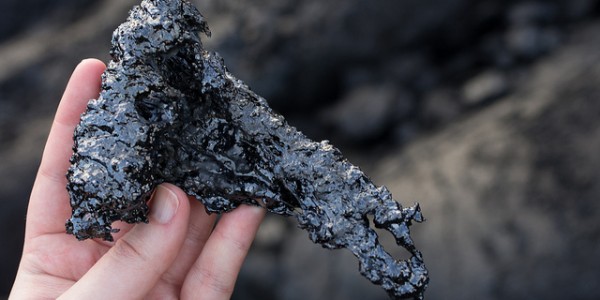
Lava can form very regular features like these tiny folds.
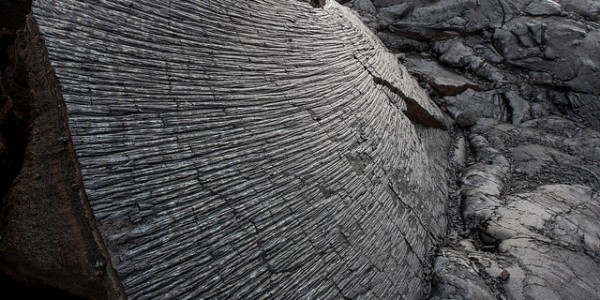
But, it also can make bizaare features that look more like draped fabric than rock.
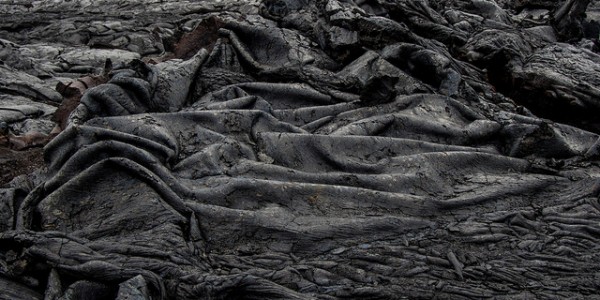
Pahoehoe makes forms called “toes” as hot lava breaks out from the cooling front and “entrails” when it moves quickly down a slope.
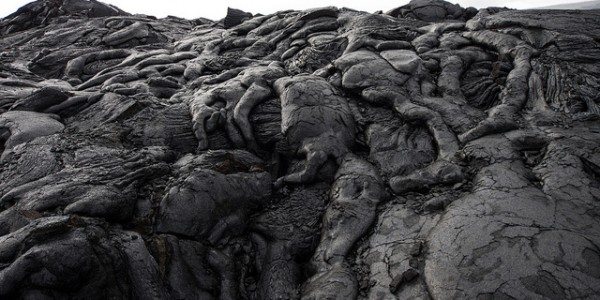
Bibliography
Batty et al, “Discrete Viscous Sheets”, 2012
Fink, “Surface folding and viscosity of rhyolite flows”, 1980
Fink and Fletcher, “Ropy pahoehoe: surface folding of a viscous fluid”, 1977
Fink and Griffiths, “A laboratory analog study of the surface morphology of lava flows extruded from point and line sources”, 1992
Gregg et al, “Formation of multiple fold generations on lava flow surfaces: Influence of strain rate, cooling rate, and lava composition”, 1998
Griffiths, “The dynamics of lava flows”, 2000
Skorobogatiy and Mahadevan, “Folding of viscous sheets and filaments”, 2000

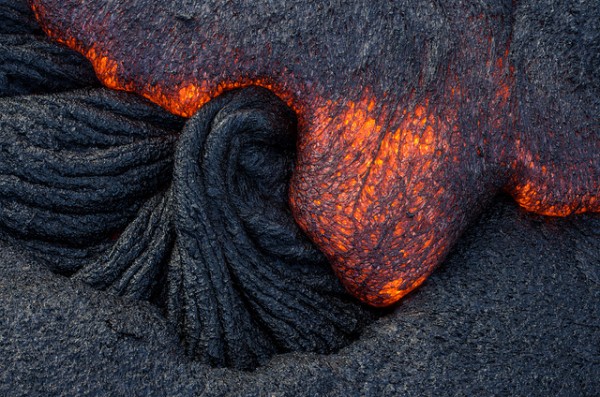

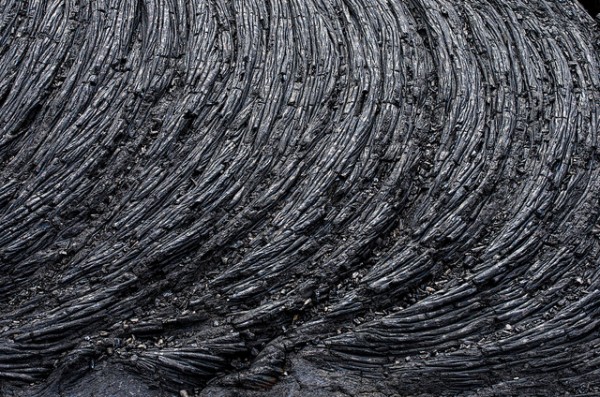
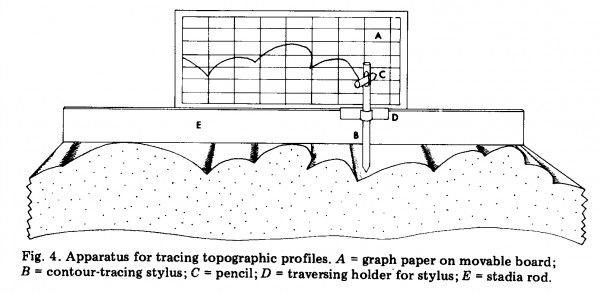
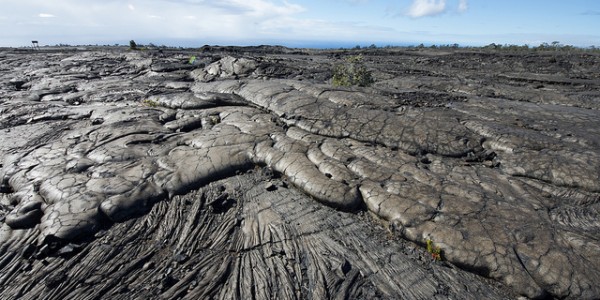

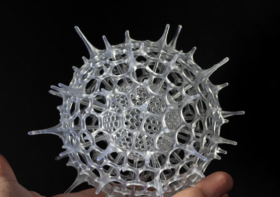
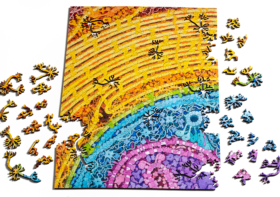

Explaining Lava Forms « adafruit industries blog
[…] Fascinating article about the physics of lava formations @ Nervous System: […]
alberta
fantastic blogpost. Love it!!
Jonathan McCabe
“The varying degrees of oxidation and chemical composition lead to different colors.” looks to me like optical interference in a thin transparent layer like
http://rockymountainlabs.com/newsletters/Layer%20Thickness%20-%20How%20is%20it%20Measured_files/Ti_oxide_colors.jpg
Jon Fink
Great post! Nice videos. Thanks for the plugs about our lava flow work!
Jon Fink (now at Portland State University)
Ice Czar
“The varying degrees of oxidation and chemical composition lead to different colors.”
The color progression would suggest the same temperature/heat effect
https://en.m.wikipedia.org/wiki/Tempering_(metallurgy)